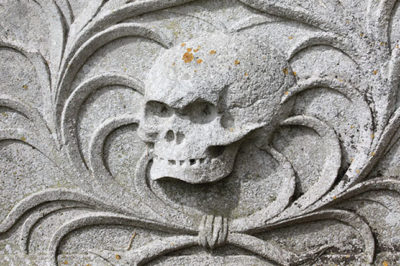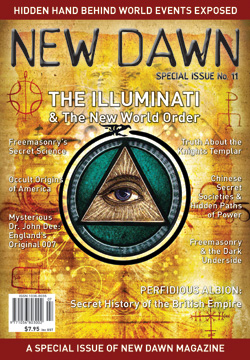From New Dawn Special Issue 11 (Mar 2010)
It was during its transitional phase of the early nineteenth century that Freemasonry began to change its public symbolism. During the eighteenth century, the skull and crossbones were used to mark the grave of a Freemason, the symbol being recognised by fellow Freemasons as the resting-place of a Master Mason. Though the skull and crossbones can be interpreted as a symbol of mortality, the use of the symbol on the figurative grave in the third degree ‘raising’ ceremony symbolises immortality, with the Master Mason being symbolically resurrected.
The symbolism on Masonic tombstones began to change in the early 1800’s, and the traditional and somewhat terrifying skull and crossbones, was replaced by the much more ‘modern’ square and compass. This more scientific and modern symbol began appearing on many headstones marking the grave of Freemasons after the unification of the ‘Modern’ and ‘Antient’ Grand Lodges in 1813, and was adopted as the official public symbol of the new United Grand Lodge.
The theme of immortality within Freemasonry is represented by a further array of symbolism. The symbolism of the snake which is also used in the Knights Templar ritual alongside the skull and crossbones, is also used as a representation of life and resurrection. The snake swallowing its own tail symbolises eternity within Freemasonry and can been seen as a stylised symbol of infinity.
The sprig of Acacia, which is used as a symbol in the third degree, also represents immortality.1 The Acacia tree supposedly grew on the grave of Hiram Abbif and could be seen as a continuation of the life cycle, his death giving life to the tree. The Ark of the Covenant and the Alter of the Tabernacle, both of which resided in Solomon’s Temple, were both, according to legend, made of Acacia wood, as was Christ’s crown of thorns, and also the cross on which he was crucified, which represents the Christian belief in the Resurrection.2
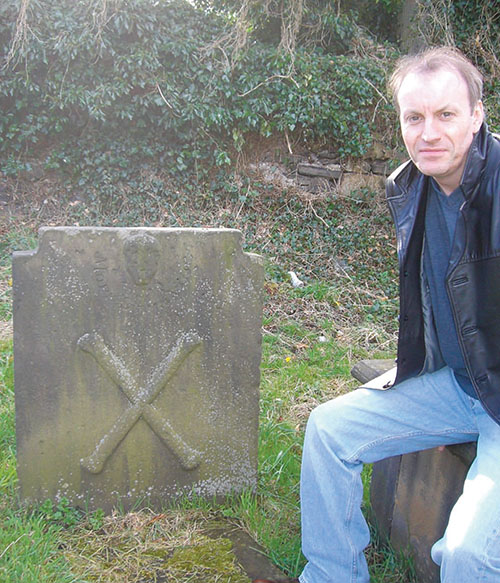
Christ’s resurrection is presented in the Knights Templar ritual, presenting a similar theme to the third degree of Craft Masonry, with the raising of Christ being entwined with the search for hidden knowledge.3
Pomegranates, though they symbolise fertility in Freemasonry today, represented re-birth and resurrection, and were used in the third degree ‘raising’ ceremony, during the eighteenth century, being displayed around the figurative grave.4
The pentagram, representing the five wounds of Christ, and the five points of fellowship, which is the embrace used in the raising of the Mason, is a powerful and potent symbol, and also symbolises ‘resurrection’, especially with the representation of the resurrection of Christ after receiving the five wounds during crucifixion.
The use of the pyramid as a Masonic symbol can also be seen to represent ‘resurrection’, as the mummified Pharaoh’s were buried within the pyramid, only to ‘rise’ again in another world. The pyramid also symbolises another form of sacred Temple, constructed using sacred geometry. The significance of the Mason completing three degrees is seen as a journey from birth, through maturity and then on to death, only to be reborn as an enlightened Master Mason, having discovered the secrets of the Craft.
This theme had been discussed by Sir Isaac Newton, who envisaged that during the millennium, the ‘children of the resurrection’ would reside in the New Jerusalem, the spirits of just men being made perfect. Newton devoured works on alchemy, philosophy and the Old Testament, searching for ancient knowledge to understand biblical prophecies and mystical alchemy. His research, which appeared wide and varied on anything remotely related to alchemy, also included Rosicrucian works such as the Fama and Confessio.5
The mysterious Rosicrucian Brotherhood during the seventeenth century were believed to be immortal and ‘invisible’, the supposed secrets of everlasting life attracting the interest of early Freemasons like Ashmole and Moray. The Rose symbolised immortality, and the rose placed on a cross, was meant to symbolise the secret of immortality.6 Later Rosicrucian societies also held the symbolism of immortality in its ritual. The resurrection of the mysterious mythical founder of the order, Christian Rosencreutz, was re-enacted within the ritual, the symbolic figure rising from his tomb.
The Rosicrucian symbolism of immortality is also reflected in Arthurian myth, such as the expected ‘resurrection’ of King Arthur and the Holy Grail which in some legends had the ability to heal and give immortality. The Holy Grail was also seen as a symbol for alchemy,7 a sacred life-giving vessel which had contained the blood of Christ, also becoming linked to the Rosicrucians. The importance of this symbolism still resounds today with speculative writers such as Michael Baigent using the Holy Grail in connection with Freemasonry and other secret societies.8
The Rosicrucian order, like Freemasonry, focused on a holy building, called the House of the Holy Spirit, which immediately echoes the focus of Solomon’s Temple in the Masonic ritual. The rediscovery of ancient knowledge was also featured, and the opening of the tomb of Christian Rosencreutz (which itself was seen as a representation of the Universe) reinforced the belief within the mysterious Rosicrucian Order of the second coming of Rosencreutz and led the way to the revealing of the secrets of the Universe itself. The Kabbalistic and Hermetic themes of immortality and the discovery of the hidden secrets of Nature symbolised in Rosicrucianism is certainly reflected in Freemasonry, and the journey made by the Mason as he experiences the three degrees.
The journey is also a spiritual and educational one, the Mason gaining ultimate wisdom and an understanding of the hidden secrets of Nature and Science. The Charge given to the candidate during the third degree in Freemasonry refers to the search for knowledge which will lead to the ultimate discovery:
Continue to listen to the voice of nature, which bears witness, that even in this perishable frame resides a vital and immortal principle, which inspires a holy confidence that the Lord of Life will enable us to trample the king of terrors beneath our feet…9
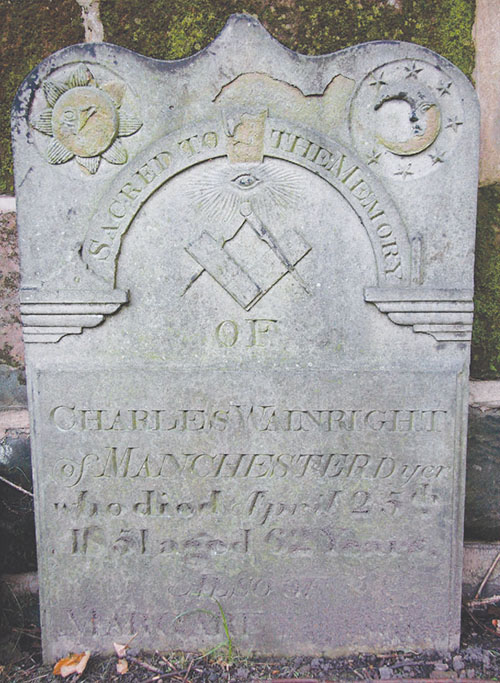
(Photo courtesy of the author)
The apparent paradox of the modern third degree ‘raising’ ceremony is that the newly made Master Mason is first told of the emblems of mortality which lies before him, only to be told that he is reborn to a new awareness, an awareness of immortality. Death and rebirth is a constant theme, and the ritual became popular, spreading quickly throughout Europe. In the eighteenth century Masonic ritual exposé ‘Three Distinct Knocks’, a description to the climax of the French version of the third degree ritual is eerily given:
The French have a very solemn way of representing (Hiram’s) Death; for when you come into the Lodge to be made a Master, there is a Brother laid down in the Place where you are to lie, with his Face all besmear’d with Blood; and they say to you, Brother, don’t be frighten’d, for one of our Brothers is kill’d, because he would not deliver the Master’s Word and Gripe to Three Fellow-Crafts, that had no Right to it; and it is the Duty of us all so to do; to die before we will deliver any Part of Masonry to them that have no Right to it. When you kneel down to receive the Obligation the supposed dead Man lies behind you; and while you are reading the Obligation and History of his Death, he gets up unknown to you, and you are laid down in his Place…10
The theatre of necromancy presented within the third degree ritual produces excellent dramatic effect, the death and rebirth of the Master Mason symbolising the endless search for lost ancient knowledge.
The skull and crossbones very likely represented necromancy themes within the medieval Knights Templar order. The legend of the ‘Skull of Sidon’ reveals the story of a Templar Knight who had a relationship with a woman. The woman died, and as to consummate the relationship, the Templar Knight dug up the woman’s grave, and made love to her, which resulted in the birth of a son nine months later. This bizarre birth came in the form of a skull and crossbones which protected the Knight and endowed him with magical powers.
Again, the skull and crossbones seem to symbolise immortality, with the continuation of life after death, entwined with secret wisdom. In the third degree, the Mason, as he lies in the figurative grave, also has his right leg crossed over his left, which is also similar to effigies of the buried Templar Knights.
Another legend, which portrays the theme of immortality, is the account of the exhumation of the Scottish King, Robert the Bruce. When his grave was opened, the remains of Bruce was said to have been found with his leg bones crossed beneath his skull. Bruce has been linked to the Templar order by a number of speculative writers, who suggest, despite the lack of evidence, the order survived in Scotland, eventually influencing modern Freemasonry.11
The necromancy traditions within the Templar movement are also reminiscent of the tale of the raising of Noah by his three sons who are searching for his secret knowledge. The attainment of gaining lost knowledge from the dead was a popular theme during the seventeenth century, with biblical references to the raising of the dead being well known.12 With notorious necromancers such as John Dee practising their art so openly, the search for the lost knowledge of the ancients became an exploration into the realms of the dark arts.
The popular image of the skull being used as an occultist tool may also have originated as part of the process of alchemy. During the process, a phase called the Dead Head occurred, which was said to have transpired just before the discovery of the philosopher’s stone, which produced the elusive Elixir of life. The imagery that is constantly portrayed is one of the spiritual student attaining liberation and sacred knowledge, and it is only after the symbolic death of his old self that the new enlightened master craftsman can enter a new level of existence.
The skull is also symbolic of the Sign of Sympathy, which consisted of the striking of the skull three times. This also takes place during the ‘raising’ ceremony, and may also represent the mystical Masonic number seven, as there are supposedly seven openings to the skull. Stevenson in his Origins of Freemasonry discusses the skull as an early Masonic symbol in Scotland representing death and rebirth, the skull, compass and square featuring on a list of symbols included in a poem displayed at the end of the early eighteenth century Dumfries No.4 Manuscript.13
Another Masonic symbol, which sometimes appeared on gravestones during the eighteenth century, was the hourglass, which, though represented mortality, was in certain cases, displayed alongside the skull. The hourglass, however, was also linked to alchemy, and appeared in many contemporary prints and works of art which covered the theme of alchemy and Rosicrucianism. The hourglass, though reminding man of his time on Earth, could be turned over, letting the sand run again, and therefore giving an endless, limitless existence. The shape of the hourglass is also reminiscent of the infinity symbol (∞) and is displayed alongside other related symbols such as the scythe, Noah’s Ark and the sprig of Acacia in Masonic artwork during the eighteenth century. The Greek philosophers believed that time could be defeated, and the Metaphysical poets of the seventeenth century, such as Donne, expressed the same ethos in their poetry. Yet, as a Masonic symbol on gravestones, the hourglass became disused, and like the skull and crossbones, was replaced by the square and compass after the unification in 1813.
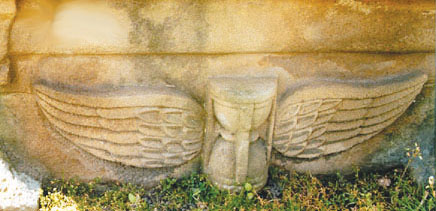
Public perception of these symbols would have differed greatly from the small percentage of the population that were Freemasons. A fellow Freemason would have recognised the symbolism, though public opinion may have been confused, leading to misconceptions regarding the image. The skull and crossbones signified danger and conjured up fear and is highly reminiscent of the ‘jolly roger’, the pirate flag which began to be used in the early seventeenth century. The skull and crossbones displayed on flags were also used by some Masonic lodges, such as the old South Saxon Lodge which was erected from Lewes Castle when the lodge met there during the early nineteenth century.14 Another symbol used on the flags of pirates and privateers was the hourglass that, as we have just seen, was also used in Freemasonry.
Perhaps the change of symbolism may have been an attempt to move away from the older, magical, mysterious, terrifying imagery; the new United Grand Lodge adopting a more modern and scientific symbol for the gravestones as a recognition of the new science and God’s reason, though it was a symbol which still represented the same meaning, that of life, death and re-birth.
Alchemists and the Search for the Elixir
The search for immortality within Freemasonry clearly drew upon the Rosicrucian links to alchemy and the search for the Philosophers Stone. The Philosophers Stone was identified with the Elixir, the mythical substance which would bestow eternal life, and could be gained after years of study and learning.
This was still seen during the seventeenth century as a form of old science, Sir Isaac Newton actually practising alchemy and interpreting biblical prophecy, alongside his other, more ‘modernist’ experimental work. Biblical characters such as Moses, who were noted in the Bible as having an unnaturally long life, were seen as early alchemists, and Newton became obsessed with the search for hidden codes in Greco-Roman mythology and in the biblical texts. Newton believed that these ancient stories hid the codes which could reveal the secret of alchemy, the ancient mythological and biblical characters literally transmuting their hidden knowledge to the modern philosophers through their encoded texts. Newton saw himself as the chosen One, chosen by God himself to decipher the mysteries of Nature and biblical prophecy, unlocking the secrets of God’s Universe using a combination of ancient scripture and modern experimental natural philosophy.15
One strange and mysterious figure who was said to have discovered the secret of immortality was Nicolas Flamel. Flamel was a fourteenth century scribe who was based in Paris, and supposedly discovered an ancient Kabbalistic manuscript. This supposedly enabled Flamel to turn base metal into gold and gave him eternal life. Flamel’s work in alchemy created many legends, and supposed sightings of him were recorded well into the eighteenth century.16
A legendary mysterious figure who was linked to Freemasonry and the Rosicrucians in the eighteenth century was Count St. Germain.17 St. Germain, like Flamel before him, was said to have experimented with alchemy and the occult, and became well known throughout the courts of Europe. He was said to have been a Freemason himself and had known the Freemasons Casanova and Voltaire, the later referring to St. Germain as the “man who never dies and knows everything.”18
Certainly historical alchemists such as Johann Baptista Van Helmont (1577–1644), contributed to early chemistry, and inspired Newton’s research into this field, but even Van Helmont was supposed to have transmuted mercury into gold by using the Philosophers Stone.19 The search for hidden knowledge was part of the alchemists work, and the popular imagery surrounding this esoteric research resounds in the necromantic themes of the ‘Modern’ Masonic third degree ritual, a ritual revised by Desaguliers, a disciple of Newton who was fully aware of the power of alchemy.
Another mysterious, though historical figure who was linked to necromancy, alchemy and the occult, was Johannes Faust. Little is known of Faust, though he seems to have been granted a BA in divinity at Heidelberg in 1509, and like Flamel and St. Germain, gained mythical status as a man who sought hidden knowledge in an attempt to gain eternal life. Faust was also the inspiration for Christopher Marlow’s play ‘Doctor Faustus’ and the Freemason Goethe’s ‘Faust’, both telling of how Faust sold his soul to the devil, paying the ultimate price for his search for forbidden knowledge. Marlow’s play, published not long before Bacon’s ‘Advancement of Learning’, sets the scene with vivid necromantic Masonic-like imagery describing a mixture of early natural philosophy, magical symbolism and ritualistic practices:
These metaphysics of magicians and necromantic books are heavenly; lines, circles, letters, characters – ay, these are those that Faustus most desires.20
Marlow describes a ritual which is reminiscent of third degree Masonry, a ritual which certainly has parallels with John Dee and Edward Kelley’s ritual practices, having Faustus searching for hidden knowledge to raise the dead, using magical symbols in a mysterious ritualistic ceremony.
Dee was an Elizabethan mystic and alchemist who became deeply involved in necromancy, his accomplice Edward Kelley, supposedly having attempted to ‘resurrect’ a corpse in a graveyard in Walton-le-Dale in Lancashire. Kelley allegedly exhumed the corpse and apparently forced it to speak using magic so it could reveal the whereabouts of a hidden fortune.21 The mysterious ritual that Kelley performed on the corpse also reflects the third degree in Freemasonry, the use of necromantic imagery and the theme of immortality entwined with the search for lost knowledge.
The third degree Masonic ritual charges the newly made Master Mason that ‘he may finally arise from the tomb of transgression’, the search for lost knowledge culminating in a performance of necromancy. Though all of these figures are enveloped in myth, they may have inspired many Rosicrucian visionaries and early Freemasons, such as Ashmole and Moray, into researching the hidden mysteries of nature and science.
Certainly Elias Ashmole became fascinated by the work of Dee and his accomplice Kelley, referring to them in his ‘Theatrum Chemicum Britannicum’, stating how they had mysteriously found a large quantity of the Elixir in the ruins of Glastonbury Abbey (a traditional resting place for King Arthur).
The themes of resurrection within Freemasonry, and the symbolism attached to Masonic gravestones, certainly seem to represent a belief in the eternal cycle of life, and the educational processes, which led the Mason to discover spiritual purity and immortality of the soul. This is perhaps a more symbolic natural approach to everlasting life, and the influence of mysterious figures such as St. Germain, Flamel, Faust and Dee, may also be symbolic, all of whom were supposedly learned in ancient knowledge, all having completed an educational journey of discovery in connection with alchemy and magic.
The above is abridged and excerpted with permission from Dr. David Harrison’s book The Genesis of Freemasonry, available from all good bookstores and through www.amazon.co.uk. His book is a revealing but thoroughly enjoyable journey through the intricate history of English Freemasonry. Freemasons and the general public will find much of interest in this fascinating exploration of the very beginnings of Freemasonry, still one of the most mysterious brotherhoods in the world.
Footnotes
1. For a detailed description of modern Masonic symbolism and regalia also see Anon., Constitutions of the Antient Fraternity of Free & Accepted Masons Under the United Grand Lodge of England, London: United Grand Lodge, 1919, 140-54.
2. See Waite, New Encyclopaedia of Freemasonry, Vol.I, 1-2.
3. Carlile, Manual of Freemasonry, 140-1.
4. Anderson, Constitutions, London: 1769, 25-6.
5. F.E. Manuel, The Religion of Isaac Newton, London: Clarendon Press, 1974, 45-6.
6. K. Mackenzie, The Royal Masonic Cyclopedia, Worcester: Aquarian Press Edition, 1987, 609. Originally pub. 1877.
7. Waite, New Encyclopaedia of Freemasonry, Vol.I, 368-78.
8. See Baigent, Leigh and Lincoln, Holy Blood and the Holy Grail.
9. Carlile, Manual of Freemasonry, 71.
10. Anon., The Three distinct Knocks, Or the Door of the most Antient Free-Masonry, Dublin: Thomas Wilkinson, c.1785, 43-4.
11. Baigent and Leigh, Temple and the Lodge, 182-3. See also Baigent, Leigh and Lincoln, Holy Blood and the Holy Grail, 74-81, and Knight and Lomas, Hiram Key, 384-91.
12. Stevenson, Origins of Freemasonry, 144-5. Stevenson discusses the case of Patrick Ruthven in Scotland in 1623, who, thinking himself bewitched, received a visitation from Isobel Haldane, later to be executed for witchcraft, who attempted to cure him by lying on him ‘hir heid to his heid, hir handis ower him, and so forth’. This incident in trying to ‘raise’ the inflicted man, was similar to biblical incidents of ‘raising the dead’ such as Elisha who lay upon a child’s body, mouth to mouth, eyes to eyes and hands to hands, which, according to Stevenson, also recalls the five points of fellowship used in the raising ceremony of the third degree.
13. Ibid., 137-3, 142 and 160-1. The Dumfries No.4 Manuscript is described by Stevenson as being an early eighteenth century manuscript and includes elements of the ritual regarding the opening of a lodge.
14. N.B. Cryer, Masonic Hall of England: The South, Shepperton: Lewis Masonic, 1989, 80, 83.
15. See Rob Iliffe, Newton: A Very Short Introduction, Oxford: Oxford University Press, 2007.
16. Charles Mackay, Memoirs of extraordinary popular delusions, London: Samuel Bentley, 1841, 40-9.
17. Waite, New Encyclopaedia of Freemasonry, Vol.II, 28.
18. Isabel Cooper-Oakley, The Comte de St. Germain: The Secret of Kings, Milano, G. Sulli-Rao, 1912, 96. Voltaire discusses St. Germain in correspondence with Frederick of Prussia dated 15th of April, 1758.
19. Frederick Ferré, Being and Value: Toward a Constructive Postmodern Metaphysics, New York: State University of New York Press, 1996, 167.
20. S. Barnet, (ed.), Doctor Faustus by Christopher Marlow, New York: Signet, 1969, 26.
21. Smith, Life of John Dee, 77.
© New Dawn Magazine and the respective author.
For our reproduction notice, click here.

